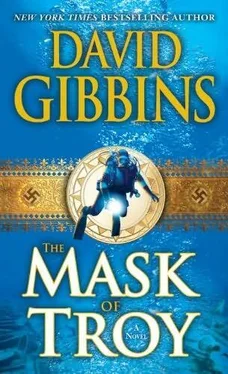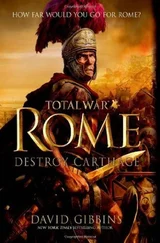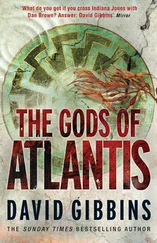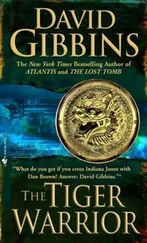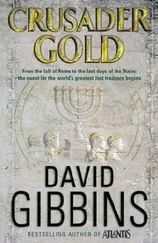David Gibbins - The Mask of Troy
Здесь есть возможность читать онлайн «David Gibbins - The Mask of Troy» весь текст электронной книги совершенно бесплатно (целиком полную версию без сокращений). В некоторых случаях можно слушать аудио, скачать через торрент в формате fb2 и присутствует краткое содержание. Жанр: Триллер, на английском языке. Описание произведения, (предисловие) а так же отзывы посетителей доступны на портале библиотеки ЛибКат.
- Название:The Mask of Troy
- Автор:
- Жанр:
- Год:неизвестен
- ISBN:нет данных
- Рейтинг книги:3 / 5. Голосов: 1
-
Избранное:Добавить в избранное
- Отзывы:
-
Ваша оценка:
- 60
- 1
- 2
- 3
- 4
- 5
The Mask of Troy: краткое содержание, описание и аннотация
Предлагаем к чтению аннотацию, описание, краткое содержание или предисловие (зависит от того, что написал сам автор книги «The Mask of Troy»). Если вы не нашли необходимую информацию о книге — напишите в комментариях, мы постараемся отыскать её.
The Mask of Troy — читать онлайн бесплатно полную книгу (весь текст) целиком
Ниже представлен текст книги, разбитый по страницам. Система сохранения места последней прочитанной страницы, позволяет с удобством читать онлайн бесплатно книгу «The Mask of Troy», без необходимости каждый раз заново искать на чём Вы остановились. Поставьте закладку, и сможете в любой момент перейти на страницу, на которой закончили чтение.
Интервал:
Закладка:
‘ Too complex for the computer,’ Costas whispered, putting his head in his hands.
Jack looked around. ‘Anyone wants to go down to Dr Lanowski’s lab afterwards for a full exposition, queue up at the end of the briefing. I won’t be far behind.’ He turned to Lanowski. ‘Right now, we’ve only got five minutes. I know you’re bursting to tell us. Your main discovery. What you were so excited about earlier.’
Lanowski looked defiant for a moment, holding his sheet covered with a mass of red scribbles, then he sighed, nodded and put it down. He clicked the laptop, changing the screen to a new map. ‘Okay. This is a bathymetric and topographical map showing the Troad, the peninsula of Troy. You can see the Dardanelles to the north bounded by the southern edge of the Gallipoli peninsula, and to the west the little island of Tenedos and our location. What I want you to focus on is the plain in front of Troy, to the north-west, what Homer called the plain of Ilion. It’s an alluvial plain, watered by the river the ancients called the Scamander. Here’s what we think it looked like three thousand years ago.’ He clicked again, and the image changed dramatically, showing the shoreline much closer to Troy, in the shape of a basin.
Jack aimed his own laser pointer at the shoreline close to the citadel. ‘The site of our excavation fifteen years ago.’
‘Right,’ Lanowski said. ‘You may think it looks like the ideal harbour, protected and close to the walls of the citadel, but you’d be wrong. The actual harbour of Troy was several kilometres to the west, on the Aegean coast south of the entrance to the Dardanelles, here.’ He pointed to it. ‘There were two reasons for this. One, the alluvial plain of the Scamander opens out on to the Dardanelles, not on to the Aegean Sea. Sailing ships coming up from Greece or Egypt would have had a hell of a time beating up against the current coming out of the Dardanelles. Two, the floodplain would have been shallow, only a couple of metres deep. Too shallow for a fully laden merchant ship.’
‘But deep enough for a rowed galley,’ Jack said.
‘And rowed galleys could easily have made their way around the headland into the Dardanelles,’ Lanowski added, stumbling over the words in his excitement.
‘You’re talking about the ships of the Greeks, the ships of Agamemnon?’ Costas asked.
‘Bingo,’ Lanowski said awkwardly, looking at Jack and then at Costas, letting out a nervous laugh. He was flushed with excitement, and his hands were shaking slightly as he shuffled his notes. ‘You asked me to give a rundown of the sedimentology. Here goes.’ He clicked the computer again, and the same map outline remained on the screen but with different colours and textures. He cleared his throat. ‘The sedimentary strata begin at the bottom with Eocene turbidites and limestones, continue upward with Oligocene-Lower Miocene detritial rocks and andesitic volcanoclastics, and end with loosely consolidated sandstones of the Upper Miocene-Pliocene. Each depositional sequence consists of a lower mainly parallel-stratified sub-unit, and an upper oblique to sigmoid-oblique pro-graded sub-unit. Needless to say.’
Costas slumped back and shut his eyes, and the others looked on in various attitudes of stunned silence. Jack nodded sagely, glancing around. ‘The questions I asked of Dr Lanowski were, first, the sedimentary characteristics of a possible shipwreck site beneath us, and, second, any abnormalities in the plain of Troy that might be pinned to the late Bronze Age.’ He nodded towards Lanowski. ‘Jacob? In layman’s terms? Please?’
Lanowski took a deep breath. ‘Okay. The first one’s easy. There are thick silt deposits below us from the Dardanelles outflow. The downside is, any ancient shipwreck’s likely to be deeply buried. The plus is, buried wrecks can be spectacularly well-preserved. There’s all the usual scope for localized current variation, scouring channels in the sea bed, exposing strata that have been buried for millennia. That seems to account for the exceptional preservation of our Byzantine shipwreck yesterday. There’s lots of modern debris down there, especially from the 1915 Gallipolli campaign. Modern wrecks can create an obstruction in the current causing scour channels, revealing older deposits. That could be the case here.’
‘Okay. Excellent. And the plain of Troy?’
‘I’m basing it on your work fifteen years ago. Most of the sediment samples show exactly what you’d expect, typical alluvial outflow from the surrounding land and mountains, increasing as you get into the classical Greek period as a result of deforestation. But the really fascinating thing is the sample you took from the Bronze Age beach deposit. One of the strangest discoveries you made was realizing that those fragments of ship timbers were inland from their stone anchors. That’s what really piqued my interest. You may not believe this, but at Princeton and then Oxford I was on the college rowing team, and when a reconstructed Greek trireme was first trialled in Athens in the eighties I went along as a volunteer. It was a long time ago and I’m a little out of shape now, but I do know a bit about galleys and how you beach them. You do not beach them like that.’
Costas whistled. Jack had not known, but he nodded. ‘You mean you row hard into the beach, and then take out the anchor and carry it forward.’
‘You didn’t find enough timber to be certain of the orientation, but I’ll wager those ships you found were back to front, with their sterns facing the shoreline. As if they’d been picked up and blown inland, and swung round on their anchor chains.’
‘And the sedimentology?’ Jack said. ‘What does that say?’
‘It’s brilliant. Absolutely brilliant.’ The atmosphere in the room was suddenly electric, with all eyes on Lanowski. He seemed about to burst with excitement. ‘Thank God for your careful excavation, Jack. In fact, it was Costas who took the samples. They’ve got his handwriting on them. I found them in the excavation archive, unopened.’
‘I remember,’ Costas said, leaning forward, staring at Lanowski intently. ‘I saw it one morning, after there’d been rain. We’d exposed what we thought was the level of the Bronze Age beach. It looked as if it was streaked, with lines of sediment coming up the beach that were denser than the underlying alluvial sediment, retaining the rainwater longer.’
‘Bingo,’ Lanowski said, more confidently. ‘That’s because it was different. It was offshore sediment. Sediment that had been swept up from the north Aegean basin. Swept up the very day the ships were thrown violently forward.’ He leaned back triumphantly with one elbow against the wall, swept his hair back over his forehead and beamed at Jack, nodding.
One of the oceanographers in the front row put up her hand, a Turkish woman who had worked closely with Lanowski in the CGI lab. ‘What about this?’ she said. ‘You get an earthquake out in the north Aegean basin, the kind of thing that must have caused those fault lines. The quake sinks the ship, as described in the poem. Then the same event, maybe an aftershock or a secondary quake, causes a water surge that rises up the slope into the Dardanelles, travels over the continental shelf and hits the lagoon where the plain of Troy now lies. It’s so shallow that the surge rises up and travels far inland, as far as the walls of Troy, with enough force to lift some of the beached ships up and drive them forward.’
‘You’re talking about a tsunami,’ Costas murmured.
There was a murmur from the audience. Captain Scott Macalister, the Canadian ship’s master, a genial bearded man wearing tropical whites, put up his hand and spoke. ‘A point of interest. Tsunamis and quakes are often accompanied by weather disturbance. There’s an effect on atmospheric pressure, especially when there are frequent aftershocks. I’ve been in the western Pacific when this has happened. So I’m imagining a terrifying storm accompanying the tsunami, black clouds, thunder and lightning, the waves being whipped up to whitecaps.’
Читать дальшеИнтервал:
Закладка:
Похожие книги на «The Mask of Troy»
Представляем Вашему вниманию похожие книги на «The Mask of Troy» списком для выбора. Мы отобрали схожую по названию и смыслу литературу в надежде предоставить читателям больше вариантов отыскать новые, интересные, ещё непрочитанные произведения.
Обсуждение, отзывы о книге «The Mask of Troy» и просто собственные мнения читателей. Оставьте ваши комментарии, напишите, что Вы думаете о произведении, его смысле или главных героях. Укажите что конкретно понравилось, а что нет, и почему Вы так считаете.
